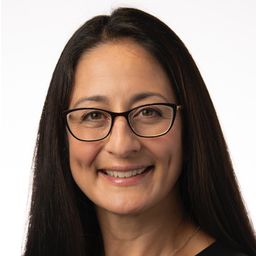Strabismus et al: Aligning practice with best evidence
My Session Status
At the end of this session, participants will be able to:
- Outline an approach to the management of third nerve palsy
- Describe the basis of strabismus fixus and design a treatment approach based on this understanding
- Review the use of vision screening and telemedicine as evidence-based tools in pediatric eye care
- Debate surgical timing, pre-operative evaluation, and management options for strabismus
CANMEDS ROLES: Medical Expert
Elementy podrzędne
Authors: Mayu Nishimura, Daphne Maurer, Agnes Wong Author Disclosure Block: M. Nishimura: None. D. Maurer: None. A. Wong: None.Abstract Body: Purpose: To conduct a randomized clustered clinical trial to assess the efficacy of vision screening to detect vision problems in children aged 3-6 years. Study Design: 24 kindergarten classrooms (mean = 30.1 children per classroom) were randomly assigned to “Early” vs. “Late” screeni...
Author: Kourosh Sabri Author Disclosure Block: K. Sabri: None. Abstract Body: Purpose: The research project aims to study the feasibility and accuracy of telemedicine for interpreting eye examinations, diagnosing amblyopia and its causes, as well as helping identify neurosurgical emergencies through the diagnosis of pupil abnormalities and paralytic strabismus in children under the age of 7 years. Study Design: The first phase...
Authors: Mansoureh Bagheri, Majid Farvardin Author Disclosure Block: M. Bagheri: None. M. Farvardin: None.Abstract Body:Purpose: Controversy exists about the proper time of surgery for infantile exotropia (XT). The aim of this study was to review the degree of postoperative ocular alignment, sensory outcomes, and need for re-operation after surgi...
Authors: Helya Aghazadeh, Gina Naranjo, Bradley Wakeman, Carlos Solarte Author Disclosure Block: H. Aghazadeh: None. G. Naranjo: None. B. Wakeman: None. C. Solarte: None. Abstract Body: Purpose: Esotropia and Hypotropia associated with high myopia is called Heavy eye syndrome (HES), also known as myopic strabismus fixus. In recent years, myopexy and its variations (loop myopexia, lateral rectus repositioning) have become excellent of cho...
Authors: Alaa AlAli, Sadik T. Sherief, Katelyn MacNeill, Kim Quann, Michael J. Wan, David R. Smith Author Disclosure Block: A. AlAli: None. S.T. Sherief: None. K. MacNeill: None. K. Quann: None. M.J. Wan: None. D.R. Smith: None. Abstract Body: Purpose: To measure the primary strabismic deviation accurately, fixation and accommodation must be controlled and all fusional divergence must be eliminated. The 45- minutes diagnostic occlusion test...



